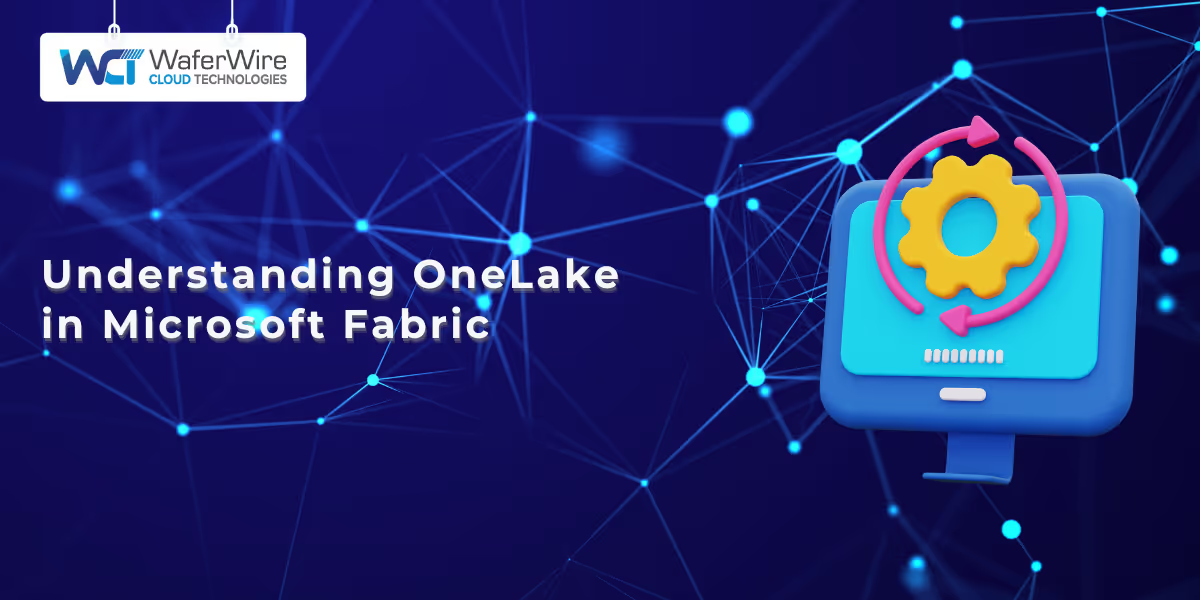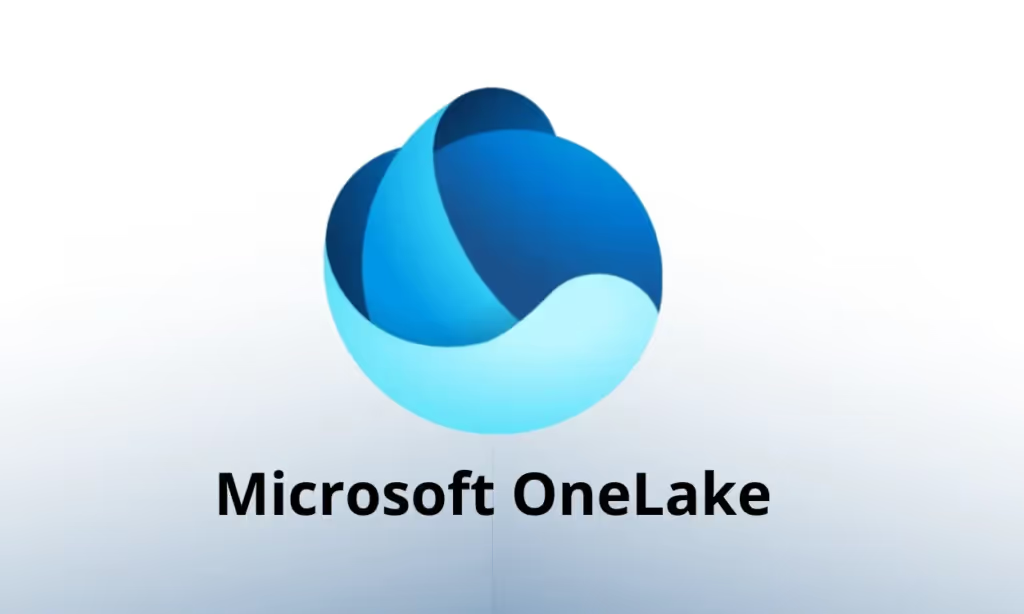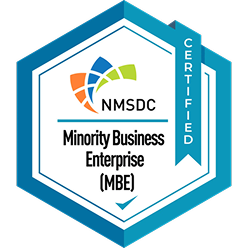

Nowadays, businesses are under constant pressure to manage, store, and extract value from growing volumes of information. The evolution of cloud platforms and unified data services has ushered in a new era of possibilities, and Microsoft Fabric's OneLake is at the heart of this transformation.
Acting as a unified, enterprise-grade data lake, OneLake streamlines how data is stored, processed, accessed, and analyzed across the Microsoft ecosystem.
But what exactly is OneLake, and why is it considered a game-changer for modern data platforms?
In this blog, we’ll take a deep dive into what OneLake offers, its architecture, integration points, benefits, and how businesses can harness its full potential.

In an era where businesses are flooded with data from countless sources—customer transactions, app usage, IoT sensors, and enterprise software—data fragmentation has become a critical challenge.
OneLake, a core component of Microsoft Fabric, addresses this by offering a unified and scalable data lake that centralizes storage across the enterprise. It eliminates the need for building and managing multiple data lakes by providing a single, consistent storage architecture.
At its heart, OneLake is designed to act as the single, logical data lake for your entire organization. Instead of managing multiple lakes across departments and use cases, organizations can now streamline storage and access using OneLake as a central foundation. All Microsoft Fabric workloads—whether it's Data Engineering, Data Science, Real-Time Analytics, or Business Intelligence—interact with the same underlying data without duplication.
OneLake is natively integrated into the Microsoft ecosystem and connects seamlessly with all Fabric components. This centralization removes storage silos and allows for faster, unified access to datasets—improving both data discoverability and decision-making.
Key Highlights:
OneLake’s architecture is built to handle the entire spectrum of data formats: structured (like SQL tables), semi-structured (like JSON), and unstructured (like video and image files). It supports open formats such as Delta Lake and Parquet, ensuring compatibility and efficiency in big data processing.
As a cloud-native solution, OneLake offers auto-scaling capabilities, ensuring that storage and performance dynamically adjust as your data needs evolve. There’s no need to overprovision infrastructure or manage complex scaling strategies, OneLake handles that behind the scenes while offering enterprise-grade performance and availability.
Key Highlights:

Data management isn’t just about storage; it’s about accessibility, security, collaboration, and analytics readiness. OneLake stands out by offering a unified environment that encourages data democratization and better cross-functional collaboration. In this section, we’ll see how its deep integration within Microsoft Fabric enhances overall data governance and utility.
OneLake isn’t just a storage solution; it’s the central component of Microsoft Fabric, enabling all workloads to interact with data in a consistent and efficient way. Whether you’re using Power BI for visual analytics, Azure Synapse for large-scale querying, or Azure Data Factory for data movement, OneLake serves as the centralized, shared storage layer.
All data written to or read from OneLake follows consistent policies, governance rules, and access controls, improving data trust, usability, and compliance across teams.
OneLake promotes data democratization, where multiple teams, data engineers, scientists, analysts, and business users can all access the same, trusted version of data. It also supports collaborative development, where users across different roles can share and build on each other’s work without worrying about managing separate data stores or moving files manually.
This paradigm shift not only improves efficiency but also leads to faster innovation, as teams work off a shared foundation.
Understanding OneLake’s technical underpinnings helps reveal why it’s such a powerful solution. Its architecture, built on modern, cloud-native principles, combines various Microsoft services and capabilities to support a comprehensive data ecosystem. Here, we’ll unpack the major components and their interconnections.
The OneLake architecture revolves around two primary components:
OneLake is built to seamlessly integrate with a host of Microsoft services, including:
These integrations are possible because OneLake uses the Delta Lake format, a widely adopted open standard that ensures compatibility with various compute engines.
Additionally, data stored in OneLake is automatically indexed and discoverable via Microsoft Purview, offering enterprise-grade data governance and cataloging.
What truly sets OneLake apart is the features that enable agility, security, and insight. From serverless data orchestration to advanced governance and intuitive exploration tools, OneLake is built to serve diverse data needs across industries. Let’s delve into the functionalities that make it an enterprise-ready platform.
OneLake supports serverless execution of data transformation pipelines. This removes the burden of infrastructure provisioning and scaling from users. Data engineers can create and execute robust ETL/ELT workflows using Fabric’s built-in tools or services like Synapse Pipelines, making data movement and preparation effortless.
Security is built into the DNA of OneLake. It adheres to Microsoft’s enterprise-grade security stack, including:
Organizations can also apply data retention, masking, and lineage policies to ensure governance, meet compliance needs like GDPR or HIPAA, and maintain audit trails.
OneLake integrates with Power BI, Excel, and other analytics tools, allowing business users and analysts to build custom dashboards using data directly from the lake. This minimizes duplication and improves time-to-insight, as users can work directly from the source.
Thanks to the underlying Delta format, OneLake supports versioned data, enabling “time travel” to previous states of data and simplifying debugging, rollback, and historical analysis.
Beyond features, OneLake delivers measurable advantages for organizations cost savings, scalability, and streamlined operations, to name a few. This section outlines how OneLake transforms business outcomes by simplifying data workflows and boosting performance in real-time analytics.
By collapsing multiple storage layers into one, OneLake drastically reduces data sprawl and the need for complex integrations. Organizations enjoy a single-pane view of all enterprise data, enabling simplified governance, reduced costs, and better control.
Whether you’re managing terabytes or petabytes, OneLake dynamically scales without manual provisioning. Its high-performance architecture ensures fast data reads and writes, even during concurrent access from multiple tools or teams.
With native connectors to over 200 data sources and compatibility with major querying engines (SQL, Spark, DAX), OneLake accelerates data ingestion and enables complex, cross-source analytics. This opens up powerful new scenarios in customer intelligence, operational efficiency, and real-time decision-making.
Because OneLake is fully embedded in the Azure ecosystem, businesses already using Azure benefit from lower integration costs, consistent identity and security models, and out-of-the-box compatibility with services they’re already using.
Ease of access plays a vital role in adoption and productivity. Whether through user-friendly interfaces like the OneLake Data Hub or robust programmatic APIs, OneLake ensures flexible interaction options for every stakeholder from data engineers to business users. Let’s explore the various ways to access and integrate with OneLake.
The OneLake Data Hub provides a centralized interface for users to explore, manage, and govern datasets. It offers visual navigation, access controls, and lineage tools that make data management intuitive and scalable.
Microsoft also offers a OneLake File Explorer extension for Windows, letting users interact with the data lake just like a local file system. This lowers the barrier to entry for non-technical users who are more comfortable navigating folders and files directly.
OneLake supports programmatic access through REST APIs and secure URIs, allowing automation tools, custom applications, and scripts to ingest or retrieve data. This makes it a developer-friendly platform suitable for integration into broader enterprise systems.
OneLake supports multiple flexible methods to bring data into its unified architecture. Whether you're working with streaming data, relational sources, or files from data lakes, ingestion into OneLake is seamless and scalable. Below are the five key ways to ingest data into OneLake:
Through Microsoft Fabric’s Data Factory or Azure Synapse pipelines, organizations can create traditional Extract-Transform-Load (ETL) or Extract-Load-Transform (ELT) flows. These pipelines support a wide range of data sources—from on-premises SQL Servers to SaaS tools like Salesforce—and allow scheduled or trigger-based ingestion.
Fabric pipelines offer a no-code/low-code experience with built-in connectors and transformation tools, making ingestion workflows highly customizable.
OneLake allows users to upload files directly into lakehouses or data hubs via the web portal or OneLake File Explorer. This method is ideal for loading CSV, JSON, or Parquet files and is often used for one-off data imports or quick testing scenarios.
This hands-on approach is especially helpful for business analysts and smaller teams that want to perform quick analyses or create test datasets.
One of OneLake’s most powerful and unique features is the ability to create shortcuts to data stored elsewhere—without copying the data.
A shortcut in OneLake allows users to reference data in other Fabric workspaces, Azure Data Lake Storage Gen2 (ADLS Gen2), or even AWS S3 buckets, making data instantly accessible without duplication. This not only reduces storage costs but also supports data virtualization and cross-environment collaboration.
Why it matters: With shortcuts, data remains in its original location but becomes instantly queryable in OneLake, a huge advantage for organizations with hybrid or multi-cloud setups.
Another standout feature of OneLake is Mirroring. This enables real-time synchronization of changes from operational data systems (like Azure SQL, Cosmos DB, etc.) into OneLake.
When a source system is mirrored, any changes—whether inserts, updates, or deletes—are reflected nearly instantly in OneLake. This eliminates the need for scheduled batch pipelines and supports near real-time analytics without disrupting the operational system.
Use case example: Mirroring is ideal for syncing ERP or CRM systems where real-time reporting and BI dashboards are critical.
Fabric’s Dataflow Gen2 is another ingestion method tailored for data wrangling and transformation using Power Query. It allows data engineers and analysts to connect, clean, shape, and load data into destinations like Lakehouses and Warehouses in OneLake—all within a graphical, code-free experience.
This is especially useful for organizations democratizing access to data prep, empowering business users to contribute directly to the data pipeline without deep coding knowledge.
Navigating the evolving landscape of Microsoft Fabric and OneLake can be overwhelming without expert guidance. This is where WaferWire Cloud Technologies plays a crucial role. As a trusted Microsoft partner, WaferWire offers comprehensive consulting, deployment, and support services to help businesses unlock the full potential of Fabric and OneLake.
Whether you’re starting your journey with data modernization or looking to optimize your analytics architecture, WaferWire’s team of certified experts ensures you design scalable, secure, and performance-driven solutions tailored to your business goals.
OneLake is more than just a storage solution; it represents a transformative shift in how organizations manage, govern, and harness the power of data. By unifying workloads, breaking down data silos, streamlining analytics, and strengthening governance, OneLake stands as a pivotal element in modern data strategies within Microsoft Fabric.
To fully unlock its potential and ensure a seamless implementation tailored to your business goals, partnering with an expert is crucial. WaferWire Cloud Technologies offers end-to-end support from architecture design and deployment to optimization and governance helping you maximize the value of your Microsoft investments.
Ready to transform your data strategy with Microsoft Fabric and OneLake? Let WaferWire guide you through every step of the way. Contact WaferWire today to schedule a consultation and take the next step toward unified, future-ready data management.
1. Can OneLake be used in multi-region or global deployments?
Yes. OneLake is built on Azure’s global infrastructure, allowing organizations to manage and replicate data across multiple regions. This is especially useful for multinational businesses that need data locality for compliance or performance.
2. What file formats does OneLake support for analytics and storage?
OneLake supports open data formats such as Delta Lake, Parquet, and CSV. This flexibility ensures compatibility with a wide range of data processing engines and analytics tools, both within and outside the Microsoft ecosystem.
3. How does OneLake help with reducing data duplication across teams?
With a single storage layer accessible by all Microsoft Fabric workloads, OneLake removes the need for copying data between services. This minimizes storage costs and ensures all teams work from the same, consistent data source.
4. Is there a way to monitor usage and performance within OneLake?
Yes. Microsoft Fabric offers built-in monitoring and observability features for OneLake, allowing teams to track data usage, access patterns, and performance metrics. These insights are crucial for optimizing workloads and costs.
5. What’s the learning curve for teams adopting OneLake?
Minimal. Since OneLake integrates with familiar tools like Power BI, Synapse, and Excel, most users can quickly adapt without needing to learn entirely new systems. Developers can also work with standard APIs and file system paths.
6. Can OneLake support real-time or near-real-time analytics?
Absolutely. OneLake, in conjunction with Microsoft Fabric’s real-time analytics engine, can ingest and process streaming data, making it suitable for scenarios like IoT, fraud detection, and operational dashboards.

